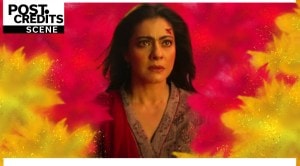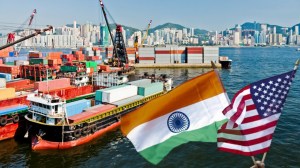Stay updated with the latest - Click here to follow us on Instagram
Vijay Diwas: Two 1971 war heroes go down memory lane
Lieutenant General Kuldeep Singh Brar (Retd) and Wing Commander Azeez-ur-Rahman (Retd) share stories of their role in India’s victory over Pakistan in the 1971 war.
 Lieutenant General Kuldeep Singh Brar (Retd), Vir Chakra and Wing Commander Azeez-ur-Rahman (Retd) (L-R)
Lieutenant General Kuldeep Singh Brar (Retd), Vir Chakra and Wing Commander Azeez-ur-Rahman (Retd) (L-R) As India celebrates its victory over Pakistan in the 1971 war, two veterans from the Indian Army and IAF, who took part in the war, go down memory lane and share their stories with The Indian Express.
Lieutenant General Kuldeep Singh Brar (Retd), Vir Chakra
Inspired by his father, Lt Gen K S Brar joined the Indian Army and was commissioned in June 1954. In the 1971 war, Brar was assigned the task to capture the Pakistani garrisons at Bakshiganj and Jamalpur and link up with 2 Para at Tangail on December 11, 1971.
 “The Pakistanis never imagined a large force coming along this route and were completely taken by surprise,” said Lt Gen K S Brar. (Express)
“The Pakistanis never imagined a large force coming along this route and were completely taken by surprise,” said Lt Gen K S Brar. (Express)
Brar was awarded Vir Chakra for his role in the 1971 war.
Speaking about his early days, Brar said, “l was commissioned into the Indian Army (Maratha Light infantry-Jangi Paltan) in June 1954. I was inspired by my father Major General D S Brar and had my mind set on a life of soldiering when I was a young boy. Incidentally, my late father commanded the 5th Royal Marathas during World War 2 and was the first Indian officer to get the distinction of commanding a battalion in battle.”
“The task given to me in the 1971 war was to capture the Pakistani garrisons at Bakshiganj and Jamalpur in East Pakistan and speedily link up with 2 Para at Tangail on December 11, 1971. Thereafter, I had to proceed to Dacca. My battalion was located on the Meghalaya-East Pakistan border. As there was no bridge across the Brahmaputra we would have to move on a manpack basis, leaving our vehicles behind and move with limited rations and ammunition. We mustered a large number of fishing boats and bullock carts; the former to lift the troops across the Brahmaputra and the latter to carry our rations and ammunition. The bullock carts were hitched to the boats and the bullocks swam along the boats, tied with ropes. This was a major operation and had to be carried out at night,” he recalled in Mumbai.
“The Pakistanis never imagined a large force coming along this route and were completely taken by surprise. Along with us were about a hundred highly motivated Mukti Bahini who acted as guides. The crossing went off well and we entrenched ourselves in sugarcane fields in the rear of 31 Baluch (infantry regiment of the Pakistan army) who were bewildered when they realised that they were trapped,” Brar said. “While we were getting ready for the attack, the Pakistanis tried to make a desperate breakout and head for Dacca which was short of troops and Indian Army columns fast approaching. The entire fleet of vehicles was trapped once our rocket launchers took on the leading vehicle. There was a massive fire. Relentless fire was brought down on them and they had no other choice but to get out of their vehicles and attack our defences with their war cry ‘Allah O Akbar’. In the thick of darkness, the firing continued, until at dawn we saw the sight of 337 dead bodies scattered in front of us,” Brar said.
Sharing his insights, he continued, “Soon enough, after dawn, we saw a column come out of Jabalpur carrying a white flag of surrender. While the mopping up continued, we had a massive task of capturing vehicles from the town and received an airdrop of rations. However comical it may sound, we mustered all types of vehicles – buses, trucks, fire engines, tempos etc and there was no time to waste as 2 Para was to make a para landing at Tangail that evening and they would be extremely vulnerable unless the link up was completed.”
Brar was one of the first soldiers to have entered Dacca.
“Our Brigade Commander Brigadier H S Kler and General Officer Commanding (GOC), Major General G S Nagra took the bold step to speak to General Niazi (Lt Gen AAK Niazi who was a Pakistan army commander in East Pakistan) on the telephone which we found on the bridge at the entrance to Dacca. After exchanging formalities, General Niazi said he had decided to surrender and requested General Nagra and a few others to drive down to HQ Eastern Command for a dialogue. He sent a few cars led by Gen Jamshed Gulzar Kiani (a Pakistani officer) who drove us straight to Niazi’s headquarters where he was waiting for us. Our story ends here after General Nagra rang up Lt Gen J S Aurora to give him the news that we were now in Niazi’s office and they were surrendering. Thereafter, General J F R Jacob, chief of staff, Eastern Command, arrived in a helicopter to chalk out the details of the surrender which took place on December 16, 1971,” Brar said.
Wing Commander Azeez-ur-Rahman (Retd)
A 30-year-old pilot during the Indo-Pak war, Wing Commander Azeez-ur-Rahman (Retd), now 81, says proudly that he flew a Sukhoi 7 BMK aircraft and attacked Dacca (presently Dhaka) airfield. As he flew the aircraft, he says, he came under intense fire from anti-aircraft (AA) guns by the Pakistan army.
“The task given to me was to give close support to the Army at various locations. I flew the Sukhoi 7 BMK aircraft. I recall attacking Dhaka airfield wherein Squadron Leader S V Bhutani’s aircraft was shot down. However, he ejected and was taken as a PoW (prisoner of war) for a week or so till our Army took over. Having done an extra attack mainly to locate my leader over Dhaka, I consumed more fuel and landed at Dum Dum ( Calcutta) with almost zero fuel,” Rahman recalled in Bengaluru.
“Our squadron was responsible for breaking Harding bridge and blowing up the Jessore airfield bomb dump. Our mood was just that we were trained to do a job and we did it with gusto supporting the Army. We got a few good show letters from the units that we supported with rocket bombs and 30-mm front guns,” he said.
Asked if his family was worried for him, the officer said, “I was married. Generally, all families of IAF (Indian Air Force) fighter pilots are tough and hold themselves proudly.”







